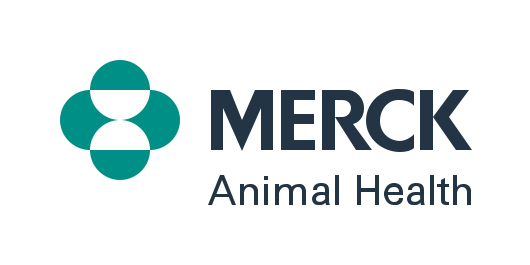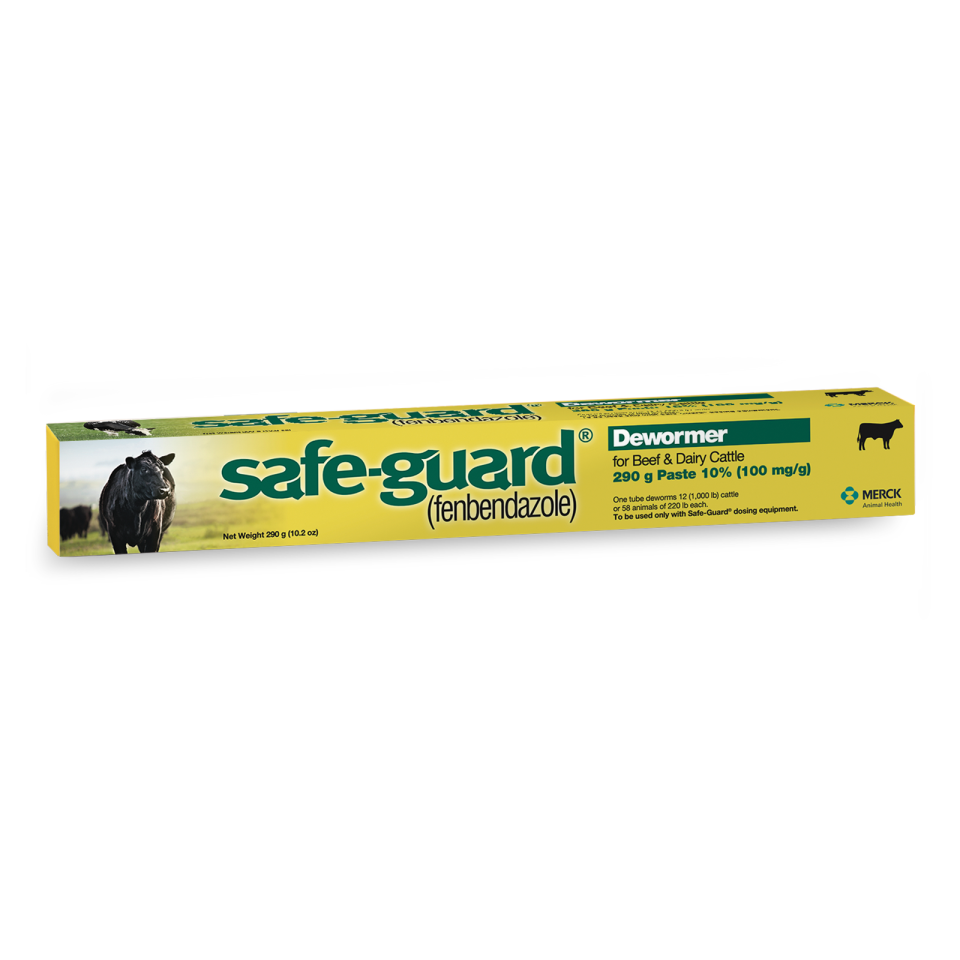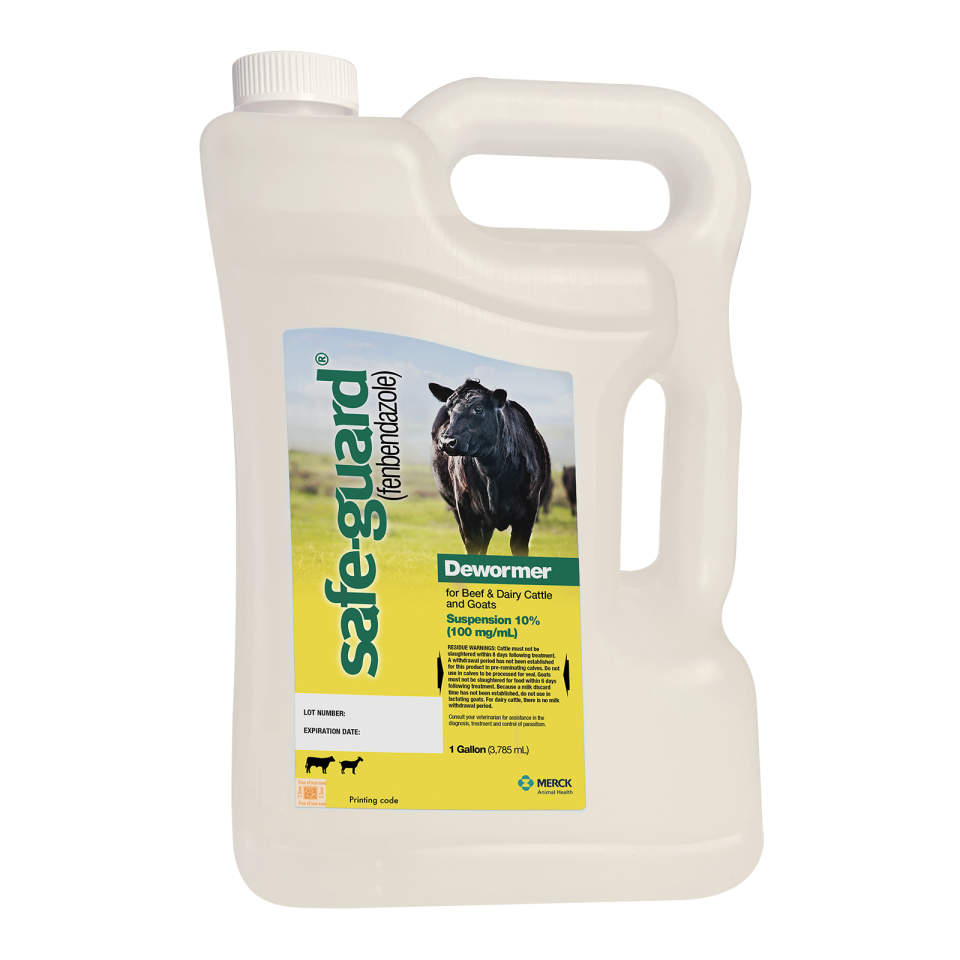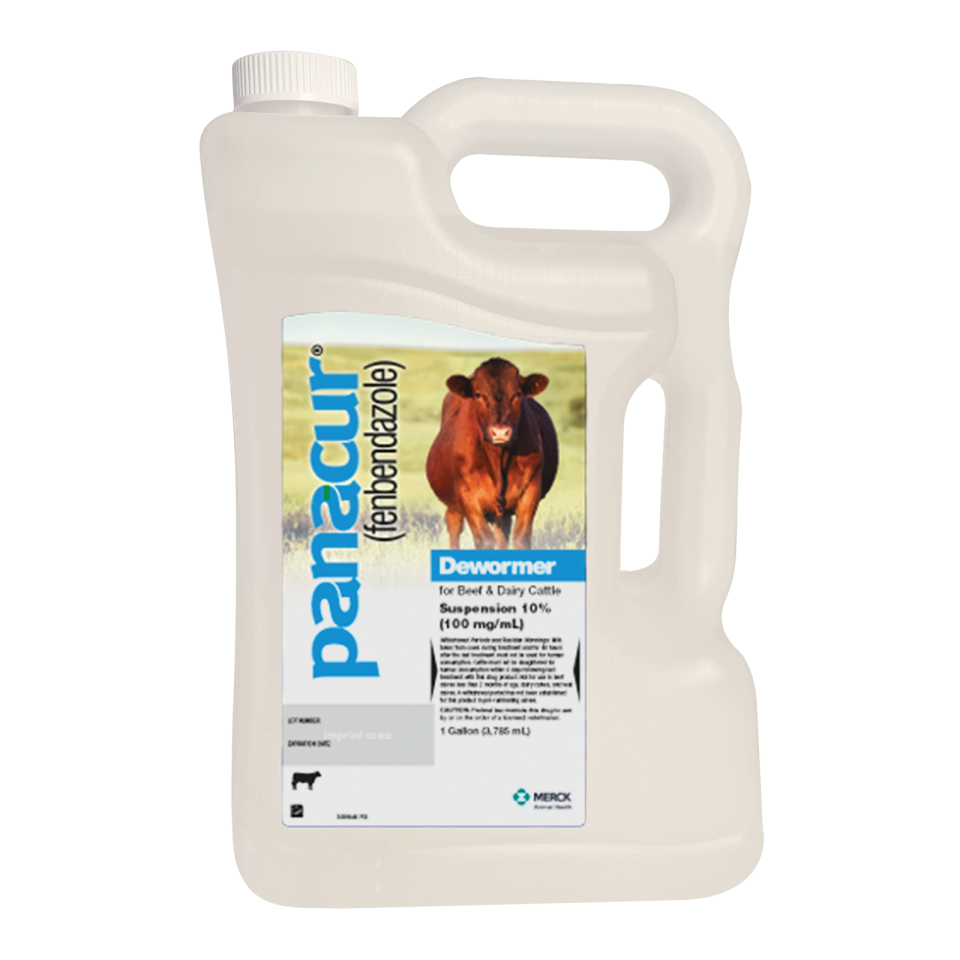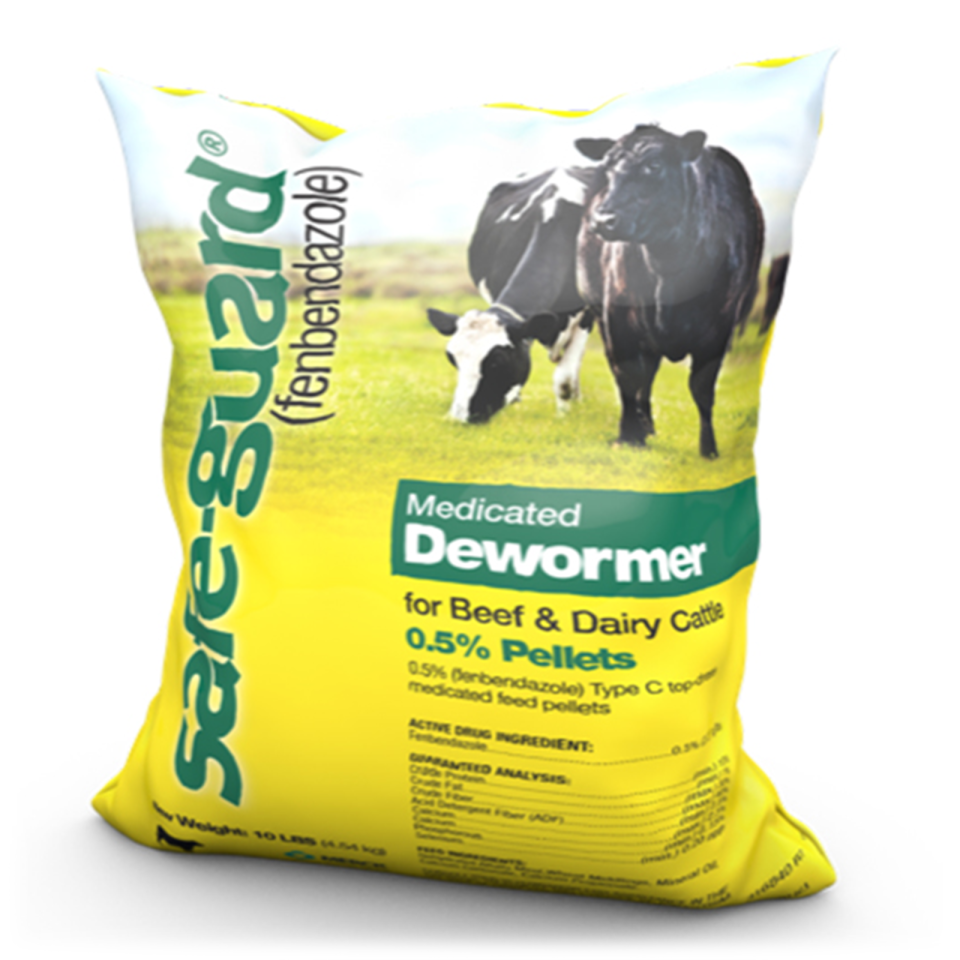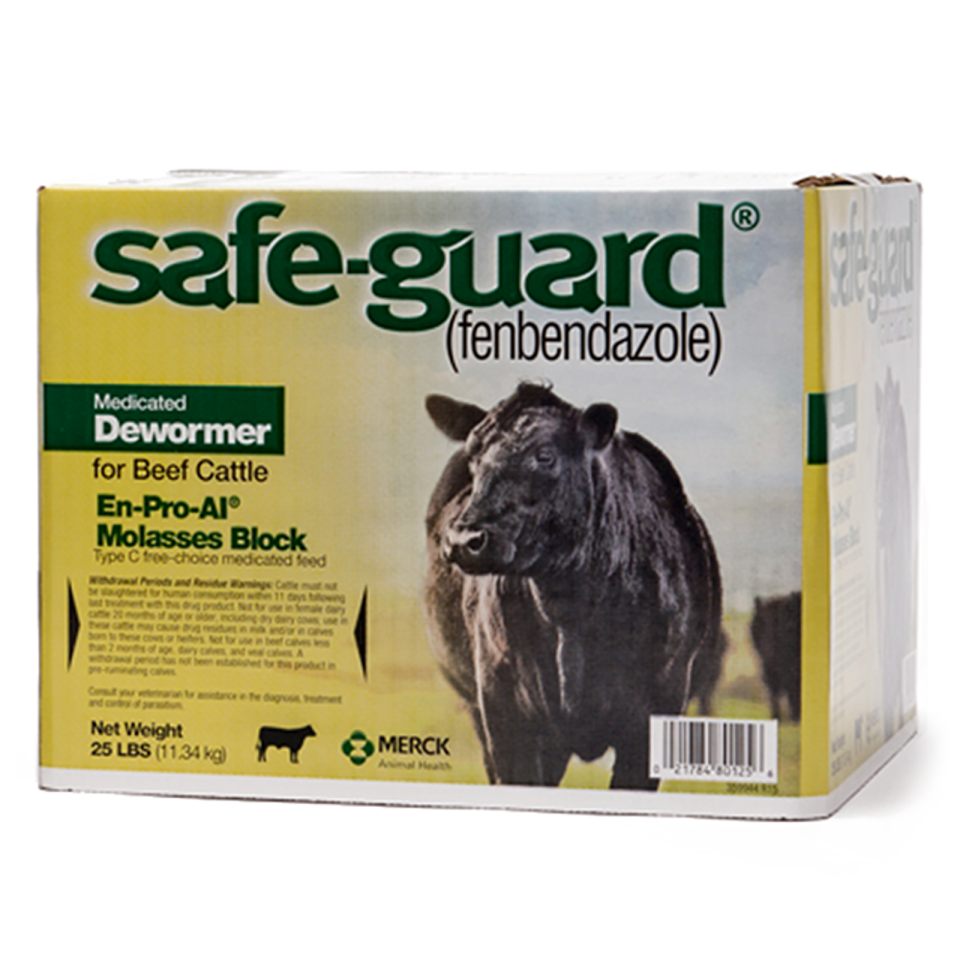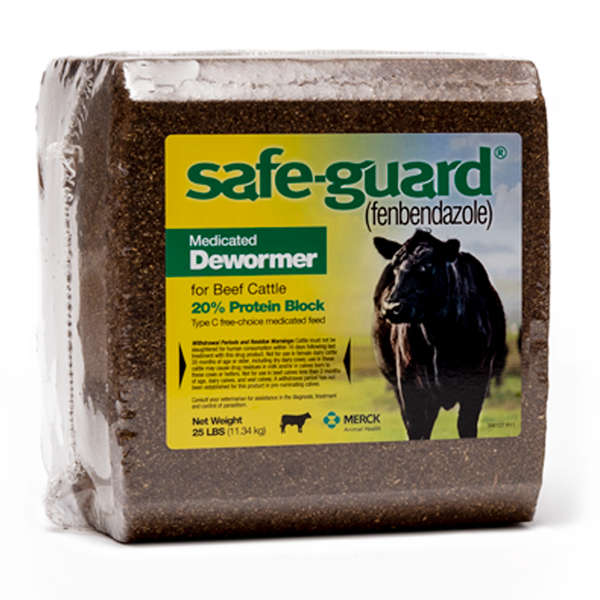
A legacy of fighting monstrous parasites.
For 40 years, producers have relied on SAFE-GUARD to protect their herds from profit-eating parasites. It was powerful then, and remains powerful now – with all formulations demonstrating efficacy over 91% as determined by ongoing testing.1
Deworm your way with SAFE‑GUARD.
Available in a wide variety of effective formulations.
Choose suspension, paste or the feed formulation your cattle are already used to eating — so you know they’ll get their dose.
Add SAFE-GUARD. Subtract parasites. Add pounds.
SAFE-GUARD features broad-spectrum activity against internal parasites,
which threaten herd health, feed intake and performance.
- All formulations of SAFE-GUARD are over 91% effective at eliminating such resistant parasites – each exceeding the 90% recommended threshold.1
- SAFE-GUARD also quickly reduces egg shedding and pasture contamination.
- Research shows calves infected with Cooperia had 7.4% less average daily gain and 5.4% lower feed intake.2
- Cattle successfully dewormed with SAFE-GUARD demonstrate an average weaning weight increase of 28.9 lbs. per head.3
SAFE-GUARD stands strong in the face of resistance.
Widespread use of endectocides over the last 40 years has contributed to a growing resistance concern. This is primarily because resistance to one compound or brand may cause resistance to other members of the same class. This is known as side resistance. Fortunately, SAFE‑GUARD, a member of the benzimidazole class, remains a powerful option.
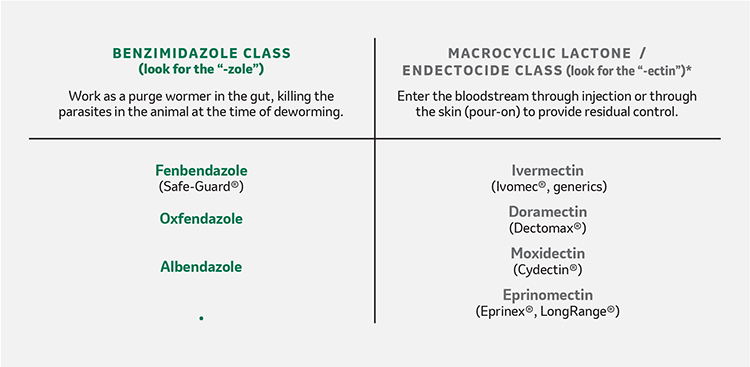
*Macrocyclic Lactones can also be broken down into avermectins and milbermycins, but are still the same class.
See how SAFE-GUARD stacks up.
When compared to other popular brands of dewormer, it’s easy to see SAFE‑GUARD is the most effective option as proven by the most current data.1
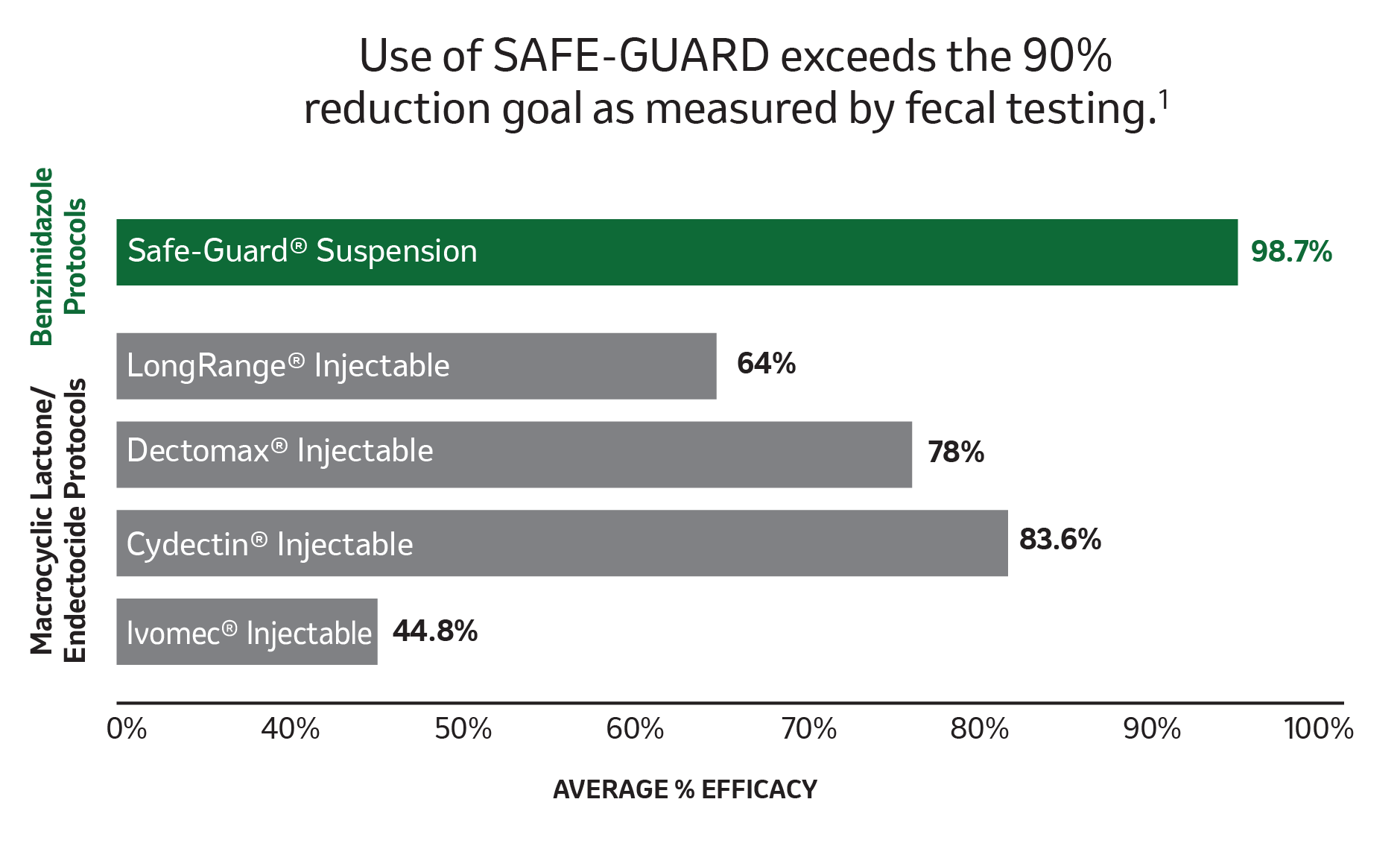
How hard is your dewormer working?
Parasite resistance is on the rise. And certain dewormers that worked well in the past may not work as well now. See why a dewormer from the benzimidazole class, like SAFE-GUARD, may be the answer.
Determining success with fecal testing.
No matter your deworming schedule for cattle, a fecal egg count reduction test (FECRT) is a diagnostic tool that can tell you just how well your deworming program is working. In this video, watch the step-by-step process for conducting an accurate FECRT, learn why they’re so important and see exactly what your results mean.
Proven, powerful and GUARANTEED.
If you try SAFE-GUARD and don’t receive a fecal test result of 90% or above, Merck Animal Health will provide an additional SAFE-GUARD treatment for free. That’s how you know SAFE-GUARD means power.
Important Safety Information
Do not use in beef calves less than 2 months old, dairy calves and veal calves. A withdrawal period has not been established for this product in pre-ruminating calves. Additionally, the following meat withdrawal and milk discard times apply:
Safe-Guard Paste: Cattle must not be slaughtered for 8 days. For dairy cattle, the milk discard time is 96 hours.
Safe-Guard Suspension: Cattle must not be slaughtered for 8 days. For dairy cattle, the milk discard time is 48 hours.
Safe-Guard ENPROAL Type C Medicated Block: Cattle must not be slaughtered for 11 days. For use in beef cattle only.
Safe-Guard 20% Protein Type C Medicated Block: Cattle must not be slaughtered for 16 days. For use in beef cattle only.
Safe-Guard Type A and other medicated feed products (pellets, cubes, free-choice mineral, or free-choice liquid): Cattle must not be slaughtered for 13 days. For dairy cattle, the milk discard time is 60 hours.
References
1. Merck Animal Health National FECRT Database
2. Stromberg BE., et al. Cooperia punctata: Effect on cattle productivity. Vet Parasitol. 2012;183(3-4):284-291.
3. Data on file, Merck Animal Health.

Get the latest updates! Sign up to receive cattle health management insights, industry news and more sent straight to your inbox.
